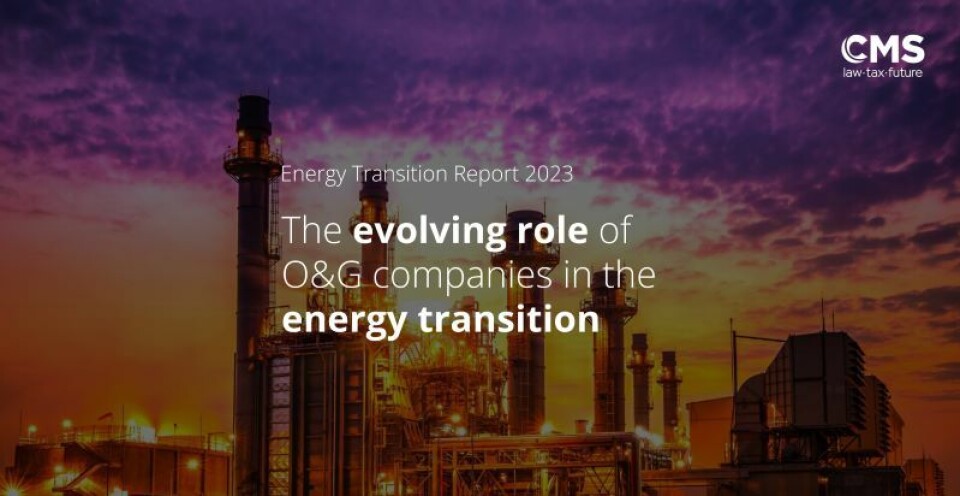Renewables lead the energy race
There’s been a notable shift in the energy landscape and the expected peak oil demand is now forecast to arrive in 2029 – a year earlier than previously projected. This is according to new research from global law firm CMS.
This acceleration is attributed to the rapid adoption of electric and hybrid vehicles, driving faster decarbonisation in the transport sector.
The research note, titled “Energy Transition 2023: The Evolving Role of O&G Companies in the Energy Transition”, conducted by Capital Economics, assessed the energy transition activities of 15 top oil and gas (O&G) majors. The findings underscore the industry’s transformation, with these companies collectively investing US$16.5 billion in their energy transition activities in 2022.
Oil and gas giants are pursuing diverse energy transition strategies shaped by their specific geographical and policy contexts, shareholder pressures and existing asset bases. These strategies for progressing the energy transition fall into four main categories:
- Carbon removal – offsetting/reducing ongoing emissions to meet emission targets.
- Low carbon solutions – displacing fossil fuel energy with less carbon-intensive alternatives such as low-carbon fuels or electric vehicle charging infrastructure.
- Renewable generation – including initiatives like wind farms.
- Hydrogen – exploring hydrogen as a “clean fuel”.
Currently, 13 of the 15 assessed companies have committed to achieving net-zero emissions by 2050, a significant increase from nine in 2021. Additionally, 11 companies have joined the “Aiming for Zero Methane Initiative”, supported by members of the Oil and Gas Climate Initiative.
“While overall spending on renewables and low carbon initiatives averaged 7.4% of capital expenditure in 2022 for the sampled companies, the wide variances between individual companies underscores how the energy transition remains in its early days as a collective strategic priority,” noted Munir Hassan, Head of the CMS Energy & Climate Change Group.
“The companies assessed here face pressures from all sides. But their commitments and initiatives demonstrate that the energy transition is nevertheless now underway and augmenting business as usual, even as the destination for each of them remains unclear.”
Renewables have taken the lead in global investment, outpacing fossil fuels. Data from the International Energy Agency (IEA) reveals that energy investment totalled US$2.2 trillion in 2021 and nearly US$2.4 trillion in 2022. The share of clean energy investment has been steadily increasing over time, comprising 59.3% in 2021 and 60.2% in 2022.
Peak consumption of natural gas is expected to follow peak oil, projected for the mid-2030s.
The research shows companies are now aligning their energy transition pathways more closely with national roadmaps. This alignment highlights the emerging standard for emissions reporting across industries. European oil and gas majors lead in diversifying energy offerings, driven by regional climate commitments and shareholder/public sentiment. US companies have also adapted their strategies in response to shareholder expectations, focusing on low carbon products and services. National oil and gas companies which form integral components of their countries’ carbon reduction commitments reflect their nations’ evolving climate goals.
To read the report in full, please click here.
To join Africa Legal's mailing list please click here

